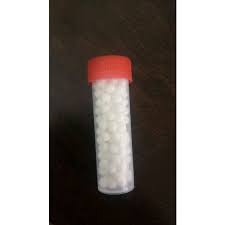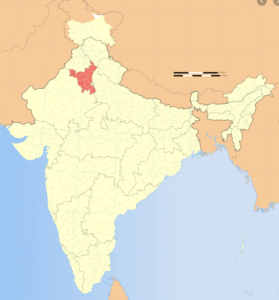finding and embracing beauty
For this blog, I want to inspire beauty among everyone, especially among those with skin conditions. From previous experience, I’ve found a simple way to make myself feel more beautiful when I don’t feel comfortable in my own skin. Before I introduce this project, I’d like to make it clear that this is just something that works for me, and it may not work for everyone. Additionally, I am not endorsing nor opposing covering up my skin condition with makeup; it’s merely become a mode of expression for me, which will differ from person to person.
In middle school, I always refused to wear makeup.
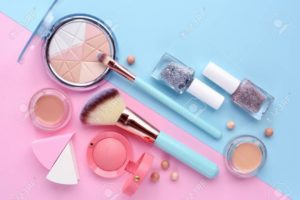 There were a few reasons I didn’t want to partake in this prevalent and seemingly social-class deeming activity. I had recently lost my mother to brain cancer, and I felt as if I had no one to guide me through the dos and don’ts of makeup. I was simply surrounded by boys – my dad, brother, and even dog – and I always sought validation through them, not any women. However, I also didn’t want to seem insecure of my skin, or cover up any parts of me. I was not ashamed of who I was, and I’m glad to have maintained that mentality until recently.
There were a few reasons I didn’t want to partake in this prevalent and seemingly social-class deeming activity. I had recently lost my mother to brain cancer, and I felt as if I had no one to guide me through the dos and don’ts of makeup. I was simply surrounded by boys – my dad, brother, and even dog – and I always sought validation through them, not any women. However, I also didn’t want to seem insecure of my skin, or cover up any parts of me. I was not ashamed of who I was, and I’m glad to have maintained that mentality until recently.
It all changed one Christmas morning, when I was staring at one of my stocking stuffers – eyeliner. I was curious if it was as hard to apply as it looked. I had seen several of my friends attempt a huge wing on their eyelids, failing miserably. Perhaps my background with painting classes would pay off in this scenario.
Disclaimer: it did not help.
I also received foundation and concealer. Within ten minutes, my whole face was pancaked with brown power and setting spray. I looked in the mirror, and I was somewhat shocked at the result.
I still looked like me. But I didn’t FEEL like me. I felt pretty and polished, yet plastic and fake. A majority of my white skin was covered, although the foundation was not strong nor dark enough to completely hide the de-pigmentation. After playing around for a few minutes and letting the adrenaline wear off, I ran to the sink, grabbed my make-up remover wipes, and scrubbed off the makeup so hard that my skin turned red, shiny with tears.
While this process was painful, I’m really glad I tried makeup. I learned that even when I may not feel prideful or society’s standard of “beauty”, I am still me. Every spot on my hand has become the manifestation of my vibrant experiences, relationships, and perspective. I’m not against makeup, and I won’t deny the great warm joy I feel when I paint a perfect wing or my lashes look long and full. However, I have no desire to ever wear makeup strong enough to cover my white skin in public, unless it’s for my pure happiness or curiosity.
I would recommend that everyone has a makeover day. Take a before picture and an after picture. Take note of how you look in both pictures, but more notably, how you feel. Comment your reactions down below. The importance here is not strictly appearance or appeasing others; rather, it’s improving our emotional knowledge and awareness of ourselves, so we know how we best function and feel as ourselves.
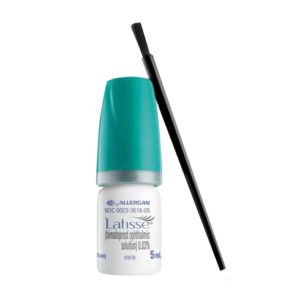 a solution that people use to lengthen their eyelashes on her spots and seen improvement. I was initially very confused how an eyelash treatment would produce dark pigmentation on the skin; nonetheless, my dad researched the brand and surprisingly found that other people had also found improvements in their vitiligo with this cosmetic treatment. So, he mass ordered boxes of the eyelash solution from India. To apply it, I would take the eyelash brush and rub it on the spots around my eyes and lips. We started with spots on the face, as the skin is more sensitive and vulnerable to change, and gradually started applying to my hands and feet. We did not do this under supervision of a doctor. There were no negative outcomes from this experiment, nor improvements.
a solution that people use to lengthen their eyelashes on her spots and seen improvement. I was initially very confused how an eyelash treatment would produce dark pigmentation on the skin; nonetheless, my dad researched the brand and surprisingly found that other people had also found improvements in their vitiligo with this cosmetic treatment. So, he mass ordered boxes of the eyelash solution from India. To apply it, I would take the eyelash brush and rub it on the spots around my eyes and lips. We started with spots on the face, as the skin is more sensitive and vulnerable to change, and gradually started applying to my hands and feet. We did not do this under supervision of a doctor. There were no negative outcomes from this experiment, nor improvements.  Immediately, I cut out all things wheat from my diet, and bought a surplus of gluten-free pastas, rice snacks, and extra vegetables to see if this diet would work for me. I was very strict about the diet for over two months, and I even lost a few pounds. Overall, I felt better and more energized too. My vitiligo remained stagnant. As I’m writing this blog, I am gluten-free again. There has been no marked improvement from the gluten-free diet in regards to my vitiligo yet, but hopefully with time, there will be. It’s become a good lifestyle, and I’ve found proper substitutes for breads and pastas and such.
Immediately, I cut out all things wheat from my diet, and bought a surplus of gluten-free pastas, rice snacks, and extra vegetables to see if this diet would work for me. I was very strict about the diet for over two months, and I even lost a few pounds. Overall, I felt better and more energized too. My vitiligo remained stagnant. As I’m writing this blog, I am gluten-free again. There has been no marked improvement from the gluten-free diet in regards to my vitiligo yet, but hopefully with time, there will be. It’s become a good lifestyle, and I’ve found proper substitutes for breads and pastas and such. 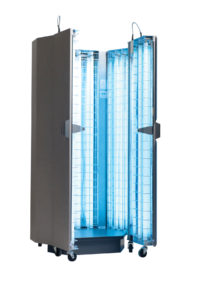 Luckily, in 7th grade, my dad had contacted a new specialist at Bellevue Dermatology. We met with the dermatologist, who introduced us to the lightbox. This colossal machine was the size of a shower stall, lined with 32 ceiling-height light bulbs along the perimeter. The machine had a large door, which swung open to reveal a small stool inside. The doctor explained that the patient would stand inside the lightbox, with all the bulbs turned on and hot, for increasing increments of time. This treatment had very similar objectives as the bagchi oil in the sunlight, but it was just industrialized and used lotion in lieu of bagchi oil. Thus, my dad picked me up every Tuesday and Thursday after school and took me to Bellevue Dermatology to use their lightbox. I distinctly remember the dichotomy of emotions I felt just before climbing into the machine for the first time – excited with hope, yet wobbly with pangs of nervousness jolting through my stomach. The lightbox was daunting in figure and it sometimes took me ten minutes just to step inside. Though I’d consistently place on the leader board for balance beam in gymnastics meets, I could never stand still on the big stool in the lightbox, and feared the day when I would fall over and burn myself on the scorching hot light bulbs. I also had to wear swimming goggles with a special UV ray protective covering so that I could open my eyes inside the machine without going blind. Not that I ever would open my eyes – I’d scrunch them closed so tight as if to avoid losing balance. Sometimes I’d start crying and whining for the nurses to pause the lightbox so I could take a breather.
Luckily, in 7th grade, my dad had contacted a new specialist at Bellevue Dermatology. We met with the dermatologist, who introduced us to the lightbox. This colossal machine was the size of a shower stall, lined with 32 ceiling-height light bulbs along the perimeter. The machine had a large door, which swung open to reveal a small stool inside. The doctor explained that the patient would stand inside the lightbox, with all the bulbs turned on and hot, for increasing increments of time. This treatment had very similar objectives as the bagchi oil in the sunlight, but it was just industrialized and used lotion in lieu of bagchi oil. Thus, my dad picked me up every Tuesday and Thursday after school and took me to Bellevue Dermatology to use their lightbox. I distinctly remember the dichotomy of emotions I felt just before climbing into the machine for the first time – excited with hope, yet wobbly with pangs of nervousness jolting through my stomach. The lightbox was daunting in figure and it sometimes took me ten minutes just to step inside. Though I’d consistently place on the leader board for balance beam in gymnastics meets, I could never stand still on the big stool in the lightbox, and feared the day when I would fall over and burn myself on the scorching hot light bulbs. I also had to wear swimming goggles with a special UV ray protective covering so that I could open my eyes inside the machine without going blind. Not that I ever would open my eyes – I’d scrunch them closed so tight as if to avoid losing balance. Sometimes I’d start crying and whining for the nurses to pause the lightbox so I could take a breather.


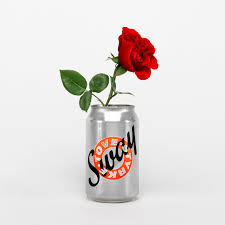

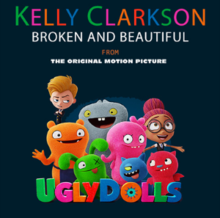


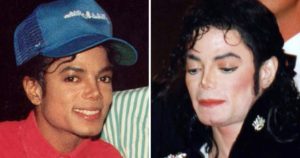
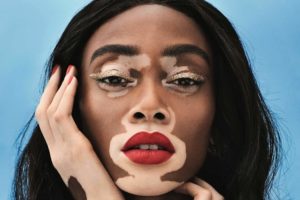 there has been more public advocacy concerning skin-disease recently. Fortunately, there are models with vitiligo who have published their own personal stories and battles, such as Winnie Harlow. My family first spotted Harlow, a model with vitiligo, on a Desigual advertisement in Europe; ever since, I’ve been following her on Instagram and observing what she has done for the vitiligo community. Harlow has has vitilgo since she was 4. She competed on America’s Next Top Model and became a prominent advocate for skin disorders on popular media. Winnie poses proudly with her white skin, and has shown that vitiligo doesn’t have to hold anyone back from achieving their dreams. She acknowledges the challenge and the difficulty of overcoming the mental and societal barriers, but doesn’t say it’s impossible. I admire Winnie because she’s expanded her platform and reached diverse demographics of women, successfully sharing her story and encouraging others to do so. She’s also become close with Kim Kardashian over shared struggles with autoimmune conditions and together, these two women have been working on a KKW x Winnie makeup collection. While Winnie embraces the creativity and freedom of makeup, she also embraces her vitiligo and never really covers it up. I also really admire Logina Salah, a makeup artist with vitiligo. She has a rather flexible opinion, as she supports both covering and uncovering white skin. She believes everyone should feel comfortable with their skin and hide these “imperfections” and feel beautiful, but we shouldn’t let them get in and “destroy your inner peace.” Wearing makeup is an option; and no one should ever feel like they HAVE to wear makeup to be included and match our societal norms. I agree with Salah because ultimately, our goal is to feel comfortable and confident in our skin, and however we get there is valid. We all have different modes of coping, but the end goal is the same. You can wear as much or as little makeup as you want, and whether someone covers or displays their white patches, it makes no difference. Let’s share our beauty and encourage each other, because skin diseases should never rule our lives; instead, we’ll rule them.
there has been more public advocacy concerning skin-disease recently. Fortunately, there are models with vitiligo who have published their own personal stories and battles, such as Winnie Harlow. My family first spotted Harlow, a model with vitiligo, on a Desigual advertisement in Europe; ever since, I’ve been following her on Instagram and observing what she has done for the vitiligo community. Harlow has has vitilgo since she was 4. She competed on America’s Next Top Model and became a prominent advocate for skin disorders on popular media. Winnie poses proudly with her white skin, and has shown that vitiligo doesn’t have to hold anyone back from achieving their dreams. She acknowledges the challenge and the difficulty of overcoming the mental and societal barriers, but doesn’t say it’s impossible. I admire Winnie because she’s expanded her platform and reached diverse demographics of women, successfully sharing her story and encouraging others to do so. She’s also become close with Kim Kardashian over shared struggles with autoimmune conditions and together, these two women have been working on a KKW x Winnie makeup collection. While Winnie embraces the creativity and freedom of makeup, she also embraces her vitiligo and never really covers it up. I also really admire Logina Salah, a makeup artist with vitiligo. She has a rather flexible opinion, as she supports both covering and uncovering white skin. She believes everyone should feel comfortable with their skin and hide these “imperfections” and feel beautiful, but we shouldn’t let them get in and “destroy your inner peace.” Wearing makeup is an option; and no one should ever feel like they HAVE to wear makeup to be included and match our societal norms. I agree with Salah because ultimately, our goal is to feel comfortable and confident in our skin, and however we get there is valid. We all have different modes of coping, but the end goal is the same. You can wear as much or as little makeup as you want, and whether someone covers or displays their white patches, it makes no difference. Let’s share our beauty and encourage each other, because skin diseases should never rule our lives; instead, we’ll rule them.